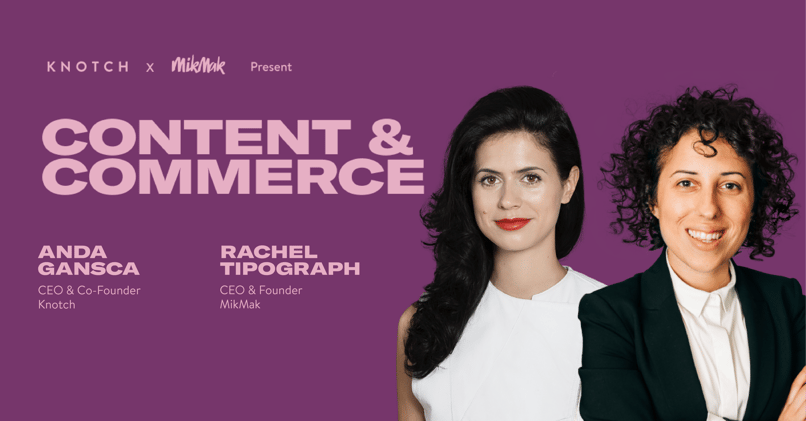
Here are some key takeaways:
Winning brands have the tightest data alignment
When it comes to retail media, it’s not necessarily “the person that has the biggest pockets [that is the most competitive]”, notes Diana Haussling, former Vice President of eCommerce & Omni Shopper Marketing at Campbell’s. “I think it’s the one that has the strongest learning agenda and tightest partnership with their IT departments. We all have tons of data, but nobody knows really what to do with it. So if IT isn't at the table with you, then it doesn't matter how much money you spend. You're not going to get the impact out of those dollars to fuel back into your strategies, not just in retail media, but across the board.”
Rachel agrees that it is the role of data that changes the eCommerce ecosystem and competition within it. MikMak predicted that “Amazon's biggest competitor isn't Target or Walmart, it's Facebook. Fast forward to the year 2021. Not only do you see that come to life, but there's this new dynamic that's happening in the ecosystem, which is that Facebook's biggest competitor is now no longer any other social platform or another major retailer. It's becoming Apple and Google. And so this trifecta of the platform war to fight over first party data is making our space more interesting than ever before.” Content and strategy powered by first party data is what will give brands optimal returns on their media spend.
Content agility relies on an integrated marketing team
Quick and agile content is important in the fast paced world of eCommerce, especially “if we are going to continue to benchmark against other industries who saw a surge in eCommerce well before CPG,” Diana emphasizes. With the steady rise of social commerce, brands can reap rewards if they can quickly meet consumers at the height of social media trends. Mindel Klein, General Manager of Integrated Marketing Communications at Colgate-Palmolive, shares an anecdote that highlights the power of agile commerce: In launching their new Optic White pen, consumers were organically posting tutorials on TikTok on how to best operate the pen which then led to a spike in Amazon sales. The power of content to drive conversion led Mindel to realize, ”We need to now very purposely build content to help support that. We have to approach content with agile content creators and it has to be fast. We have to increasingly think about how we break down those silos” to be able to shrink the lead time on advertising content.
Integrated teams and processes are what allow for agility in content creation. Anda delves in, “One of the biggest tailwinds in general for marketing is how siloed data sets are. And that's in part due to the fact that teams are siloed, but I think it's primarily due to the fact that platforms are siloed.” To this, Diana relates to the obstacles of disjointed teams and shares Campbell’s integrated marketing strategy—integrated planning. By directly communicating with each other through an “integrative briefing process”, Campbell’s is able to create content with shorter lead times, “a muscle that bigger CPG organizations really had to flex in the past year.”
Building a brand with a clear point of view
A brand’s story has to be continually shared and reinforced through its content to remain a part of its brand appeal. For Kyle Maurer, Vice President of Global Digital Marketing at Monster Energy, this means differentiating the points of view in the stories they tell. “One of the things Monster tries to do to separate ourselves is access,” he shares. “So for example, ESPN is going to give you a certain perspective on an X Games athlete. Monster can give you a different one and livestreaming is a perfect way to do that.”
For Julie Huang, US Head of Content at Alibaba, effective content and storytelling is especially important due to the lack of international exposure to both Alibaba and commerce concepts like livestreaming. Through proactively educating and informing consumers, brands are able to educate new markets with vastly different cultures and habits, proactively defining how that brand story is shared and understood. “Our objective internationally is to use content to educate and inform the audience of media, the public, investors, influencers, and other businesses about Alibaba,” she shares. “There’s no easy point of comparison here. So that's why the content for us to show and tell specifically is so important and so impactful.” Though in such a fast-paced and innovative world like eCommerce, Julie reassures us, “there’s always something exciting to cover.”
Missed the webinar? No worries—watch it on demand here.


